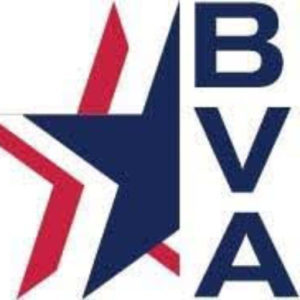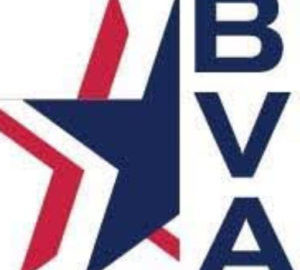BVA is one of a handful (roughly a hundred) of organizations that have been granted a “federal” or “Congressional” charter. This concept is somewhat puzzling to the public and sometimes even mystifies government officials. BVA Executive Director Don Overton has compiled a few clarifications to common misconceptions about Congressional charters.
Who came up with the idea of a “federal charter?”
The federal charter as it exists in the United States appears to be a direct descendant of the so-called European “royal charter.” The earliest known charters date back to the medieval period (i.e., 800 A.D. – 1400 A.D.) and were used by monarchs to create towns and important institutions such as colleges and universities.
Royal charters gained special popularity in Great Britain and Scotland. In those countries, the medieval uses of the charter were somewhat expanded. Some charters were granted simply for the creation of necessary institutions, such as the British East India Company.
However, some were granted to honor existing institutions and to acknowledge their “pre-eminence, stability and permanence.” The varied uses of the royal charter made their way into the practices of the earliest American colonies. One of the first charters issued on our shores dates back to 1639 and was promulgated by an “Act of the Great and General Court of the Massachusetts Bay Colony.” That charter created Harvard College, now Harvard University.
What is the purpose of the “federal” or “congressional” charter as we know it?
The practice of chartering by Congress of patriotic, charitable, and other organizations of civic value was most prominent in the middle third of the last century. Typically, the chartered organizations originally existed as state corporations (or unincorporated associations) and subsequently sought the Congressional recognition.
This was the case, for example, with BVA. Founded about a dozen years before the grant of its federal charter in 1958, the organization had been incorporated in New York. That incorporation was superseded by the Congressional enactment, which was signed into law by President. Dwight D. Eisenhower on August 27, 1958. It has been amended once over the years, but, in essence, remains very much as originally enacted.
There is no “one” purpose for a Congressional charter.
Given the early recipients of the charters (the major veterans organizations, Boy Scouts, Girl Scouts, Little League Baseball), it is clear that Congress intended to preserve the status for important and unique entities. Indeed, in 1965, President Lyndon Johnson vetoed a bill to grant a charter to a civic affairs group and complained that “Federal charters should be granted, if at all, only on a selective basis and . . . they should meet some national interest standard.” Unfortunately, by this time, the significance of a charter had been somewhat diluted.
Organizations were seeking charters in part because of the Congressional “approval” that they seemed to connote. Such approval could often be translated, even indirectly, into a financial benefit. Five years later, the House and Senate agreed to a joint statement of policy under which federal charters were to be reserved to organizations “organized and operated for the primary purpose of conducting activities which are of national scope and responsive to a national need.” The result of this has been a dramatic decline in the number of newly issued charters.
How and why would a charter ever be amended?
It is difficult to amend a federal charter. It requires – literally – an Act of Congress. Typically, an amendment is made so that the charter more accurately reflects the character of the organization.
Does the charter have anything to do with BVA membership?
Most assuredly it does! In addition to providing the general qualifications for membership in the Association, the federal charter defines the basic structure of BVA and specifies that BVA may have honorary members.
Does the federal charter confer any other specific legal benefits?
In some states, BVA’s possession of the federal charter provides an exemption from registration and reporting requirements that would otherwise apply to its fundraising activities. It is important to note that such exemptions would NOT apply to BVA regional groups and chapters, since it is only the parent organization that possesses a federal charter.
The federal charter also grants to BVA what is in essence a statutory trademark on the name “Blinded Veterans Association.” (BVA has also registered that, and other marks, with the United States Patent and Trademark Office). The charter goes on to specify that BVA may create regional groups and chapters that will bear the same name.
Does the federal charter make BVA a part of the government?
BVA remains a private, tax-exempt, charitable organization. Although there have been occasional efforts by litigants to describe (inaccurately) BVA as an agent of the federal government, all of those efforts have failed. BVA does not receive federal appropriations, exercises no federal powers, and does not have special status for access to the federal courts. In fact, BVA often litigates AGAINST the federal government, which is a sure sign that our Association is private.
Does the federal charter put BVA under the supervision of Congress?
The chartering statute requires BVA to submit an annual report to Congress, which it has faithfully done for decades. The report (which actually takes the form of the proceedings of the National Convention and multiple associated documents) is actually printed as a Congressional document. In addition, BVA is always responsive to Congressional inquiries and requests. Nevertheless, Congress does not oversee BVA operations, or management, and is not empowered to make any decisions on behalf of the Association.
What, exactly, does the BVA charter say?
The BVA Charter is incorporated as an appendix in the National Bylaws and can be accessed in MS Word (DOC) and Adobe (PDF) on the national website.


